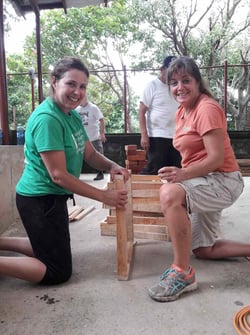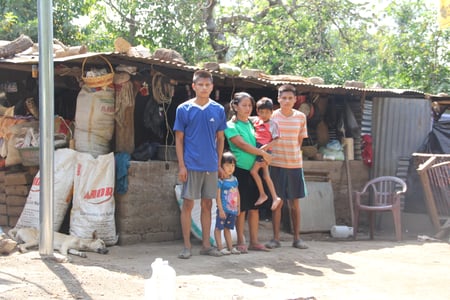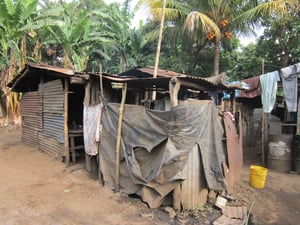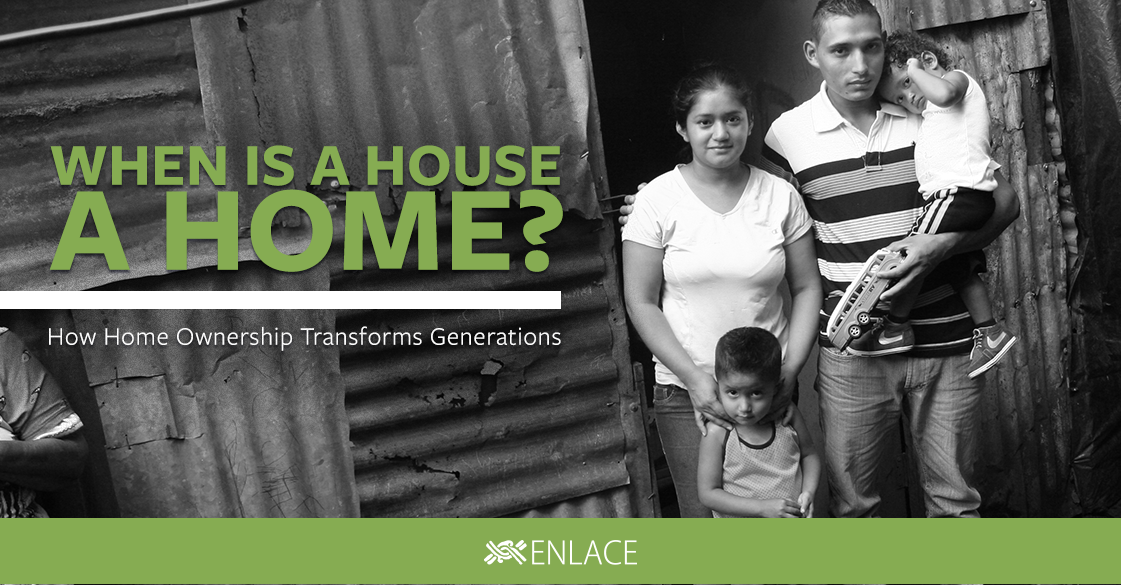Homes Transform Lives for Generations

"Working alongside church leaders and volunteers in El Salvador as they helped to build homes in their own communities was an experience I'll never forget. I came on a missions team to help build a home. I left knowing that the heroes were all the women and men in the local church who, despite their own poverty, put the needs of their neighbors first. They gave up their time from work, donated tools, and helped with childcare to build homes together that will last these families a lifetime and beyond! I can’t imagine a better way to spend my vacation time!"
-Tirzah Hammond (School Nurse and Mission Team Leader from Granville, Ohio)
Homes and Homelessness in Central America
Families across Central America struggle daily in harrowing ways. Millions of families do not have a safe place they can call home. Proper land and lodging are hard to afford. And for those living on between $1-$2 per day, living in their own home is an impossible dream.

- Dilapidated homes provide little protection.
- Often made of found materials, such as bamboo, compressed dirt, rusty aluminum and deteriorating plastic sheets.
- Rainwater seeps in, creating molds which contributes to skin and respiratory diseases. Insects embedded in dirt floors or untreated adobe walls cause severe parasitic infections.
- Often crudely built, precariously leaning up against mountainsides and huddled in ravines.
- Mothers and children constantly face the threat of theft or other violence, affecting economic and emotional well-being.
- To stay together, families often live together in one room.
- Families are often forced to move from place to place living with relatives or friends who are kind enough to take them in. This serial homelessness takes a heavy toll on both parents and children.

*To donate $30 per month for 3 years and provide one person with a new home, please click the link above and in the "Designation" dropdown, choose "Infrastructure"
Safe and Secure Housing: An Essential Step in the Fight Against Poverty
 Safe and dignified housing contributes to the health, safety, and economic well-being of families. Building and maintaining a secure home can provide a family with the emotional and economic security to send their children to school, live productive lives and change the lives of the family for a generation. But it’s not the final answer.
Safe and dignified housing contributes to the health, safety, and economic well-being of families. Building and maintaining a secure home can provide a family with the emotional and economic security to send their children to school, live productive lives and change the lives of the family for a generation. But it’s not the final answer.
According to Karen Chavez, Director of Partnership Development at ENLACE, “[h]ousing is one of the biggest needs in impoverished communities. And yet, it is one of the most difficult problems to address because the families in greatest need do not have land or the resources to buy the construction materials required. Therefore, it requires church and community leaders to rally around a family. Together they provide support, resources, and the hard work it takes to build a home.”
Every home built through ENLACE’s network of partner churches comes with a local church backing up the building with a loving, caring community committed to helping the beneficiary family thrive.
ENLACE engineers work with church and community leaders to design anti-seismic homes that are safe and promote healthy families. The homes feature lighter and more durable construction materials that improve a family's quality of life in every way. Concrete block and zinc-aluminum siding homes are built to survive strong earthquakes and powerful storms. The homes include two separate bedrooms, a common area, and a large front porch. Each home also has paved floors, doors, windows, and some are wired for electricity.

*To donate $30 per month for 3 years and provide one person with a new home, please click the link above and in the "Designation" dropdown, choose "Infrastructure"
Homes by the Numbers
|
|
A Local Church Serves Its Neighbors: The Story of Cocalito
In 2015, the Aposento Alto Church working with its Community Association identified and managed a housing project for 15 extremely vulnerable families in El Cocalito, dramatically changing the lives of families and impacting the entire community through their work. At the conclusion of the initiative, they realized that there were still many more families living in severely overcrowded conditions and in unsafe housing.
The church leaders and members were so moved by their plight they wanted to continue their efforts. However, these families did not have their own land or access to land on which to build homes. Despite these setbacks, the church and community leaders began to search for property in El Cocalito that might be available to buy and suitable for homes. They also continued to engage with their local mayor's office, which had worked with them on previous projects.
As a result of the church and Community Association's persistence, the Mayor of Jujutla (which includes Cocalito as part of its jurisdiction) purchased a swathe of land for $7,500 for the project and church and community leaders divided the land into 8x16 meter plots. With additional funds that the church itself raised (by emptying out its building fund--the church has yet to finish its building!) they bought aluminum sheets for roofing material and began to build homes for 12 families. Dozens of church volunteers working with the resettled families gradually built makeshift homes using new and recycled materials, such as leftover tin, plastic, thin bamboo sticks, and compressed dirt.
Now there are over twenty families living in these makeshift homes. In order to best serve its neighbors, the church is trying to complete this project by helping to build them sturdy, metal-framed, permanent homes. Church and community leaders, working with the ENLACE technical staff, have created a design for each home that is complete and better-suited to serve the family and withstand the elements and provide a wonderful place to live.



